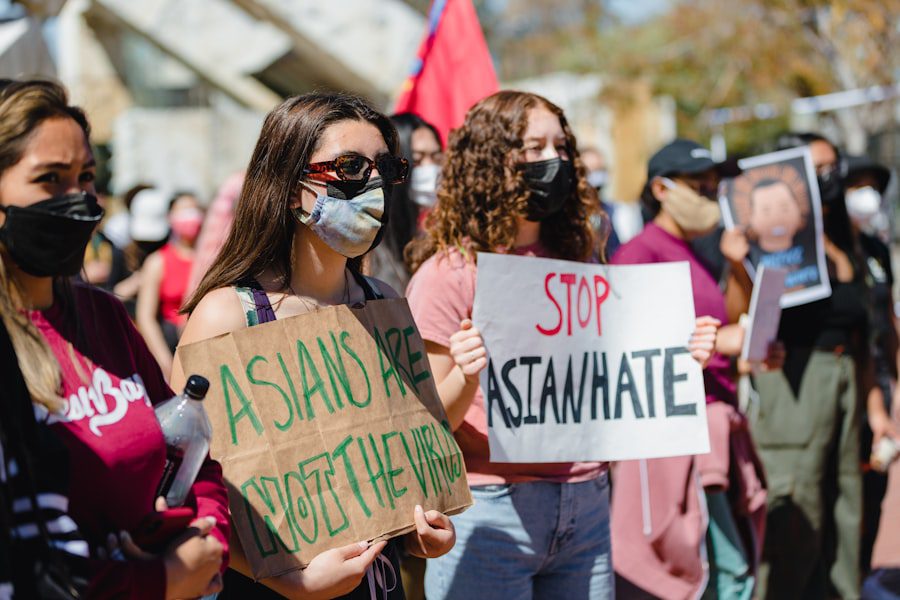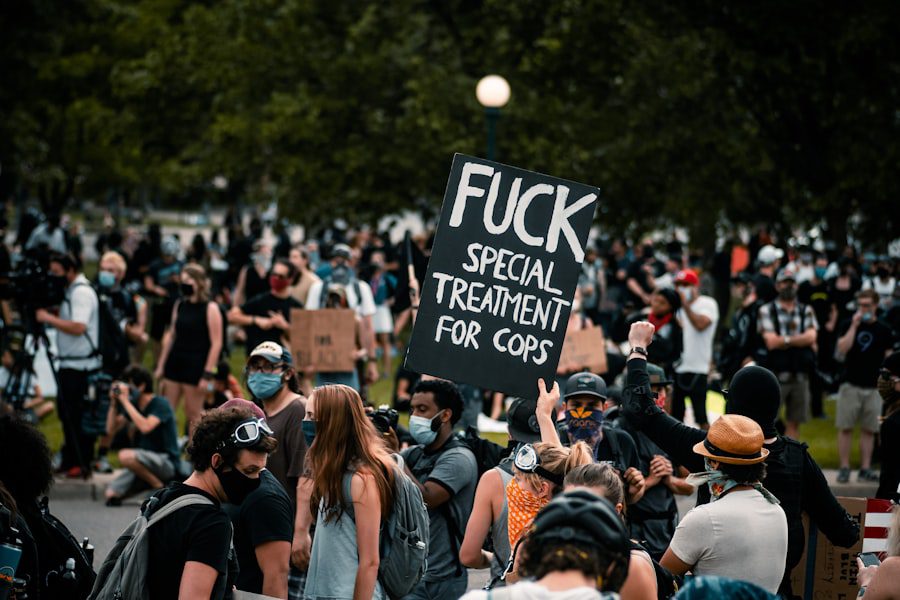Fear is a primal emotion that has shaped human behavior and societal structures throughout history. It serves as a protective mechanism, alerting individuals to potential dangers and prompting them to take action. However, fear can also be a double-edged sword, capable of fostering division, manipulation, and unrest within societies.
The concept of the “fear factor” encompasses the various ways in which fear influences human interactions, governance, and economic stability. In contemporary society, fear is often weaponized by various entities, from political leaders to media outlets, to achieve specific agendas. Understanding the multifaceted nature of fear is crucial for addressing its implications on social cohesion and national unity.
The fear factor is not merely an individual experience; it permeates collective consciousness and can lead to widespread societal changes. For instance, during times of crisis—be it a natural disaster, a terrorist attack, or a pandemic—fear can catalyze rapid shifts in public opinion and behavior. The response to such crises often reveals underlying tensions within society, as different groups react to fear in divergent ways.
This article will explore the intricate relationship between fear and various societal dimensions, including social division, political manipulation, economic impact, media influence, national security, and the potential for overcoming fear to foster unity.
Key Takeaways
- Fear is a powerful emotion that can be used to manipulate and divide societies.
- Political leaders often use fear to control and influence public opinion.
- Fear can have a significant impact on the economy, leading to decreased consumer confidence and investment.
- The media plays a crucial role in shaping and amplifying fear within society.
- National security can be both a source of fear and a justification for political actions.
Social Division and Fear
The Stigmatization of Communities
For example, during the COVID-19 pandemic, fear of the virus led to stigmatization of certain communities perceived as vectors of transmission. This not only heightened tensions between different ethnic or social groups but also fostered an environment of mistrust and hostility.
The Amplification of Fear through Social Media
Moreover, social media has amplified the effects of fear on division. The rapid spread of misinformation can create panic and reinforce stereotypes, leading to scapegoating of marginalized communities. For instance, during times of economic downturn or social unrest, minority groups may be unfairly blamed for societal woes, further entrenching divisions.
The Consequences of Fear-Driven Polarization
The psychological impact of fear can also lead individuals to adopt more extreme views, as they seek certainty in an uncertain world. This polarization can hinder constructive dialogue and collaboration across different segments of society, making it increasingly difficult to address shared challenges.
Political Manipulation and Fear

Political entities have long recognized the power of fear as a tool for manipulation. By instilling fear in the populace, leaders can rally support for policies that might otherwise be unpopular or controversial. This tactic is often employed during election cycles or in response to crises when leaders seek to consolidate power or divert attention from pressing issues.
For example, the rhetoric surrounding immigration often plays on fears of crime and economic instability, leading to policies that may infringe on civil liberties in the name of national security. The use of fear in political discourse can also lead to the erosion of democratic norms. When citizens are constantly bombarded with messages that emphasize danger—be it from foreign adversaries or domestic threats—they may become more willing to sacrifice their rights for perceived safety.
This phenomenon was evident in the post-9/11 era in the United States, where the government implemented sweeping surveillance measures justified by the need to combat terrorism. Such actions can create a culture of fear that stifles dissent and undermines the very principles of democracy.
Economic Impact of Fear
The economic ramifications of fear are significant and far-reaching. Fear can influence consumer behavior, investment decisions, and overall economic stability. During periods of uncertainty—such as financial crises or geopolitical tensions—consumers may curtail spending due to anxiety about their financial future.
This reduction in consumer confidence can lead to decreased demand for goods and services, ultimately resulting in economic contraction. Moreover, businesses may respond to fear by adopting more conservative strategies, such as reducing hiring or delaying expansion plans. For instance, during the early stages of the COVID-19 pandemic, many companies faced unprecedented uncertainty regarding their operations and revenue streams.
As a result, numerous businesses implemented layoffs and cutbacks in response to fears about future profitability. The ripple effects of such decisions can be profound, leading to increased unemployment rates and further economic instability.
Media Influence on Fear
The media plays a pivotal role in shaping public perceptions of fear and risk. News outlets often prioritize sensational stories that evoke strong emotional responses, which can amplify feelings of anxiety within the population. The 24-hour news cycle has created an environment where negative news is constantly highlighted, leading to a skewed perception of reality.
For example, coverage of violent crime or natural disasters can create a sense of pervasive danger that may not accurately reflect actual risk levels. Social media platforms further complicate this dynamic by allowing misinformation to spread rapidly. False narratives can exacerbate fears surrounding specific issues—such as health crises or political instability—leading to public panic and irrational behavior.
The viral nature of social media means that fear-based content can reach vast audiences in a matter of hours, often outpacing efforts to correct misinformation. This phenomenon underscores the responsibility of both traditional media and social media platforms in presenting accurate information and mitigating unnecessary fear.
Fear and National Security

The Paradox of Security Measures
However, this approach can lead to a paradoxical situation where heightened security measures create an atmosphere of distrust among citizens. When individuals feel that their government is monitoring them excessively or infringing upon their rights in the name of security, it can erode public trust and civic engagement.
Eroding Public Trust
This dynamic has been evident in various countries following terrorist attacks, where governments implemented strict security protocols that were met with public resistance due to concerns over privacy violations. The consequences of such measures can be far-reaching, leading to a breakdown in the relationship between citizens and their government.
Striking a Balance
Ultimately, finding a balance between national security and individual freedoms is crucial. Governments must navigate the complex landscape of security concerns while also protecting the rights and liberties of their citizens. By doing so, they can foster a climate of trust and cooperation, rather than fear and mistrust.
Overcoming Fear for National Unity
Despite the pervasive influence of fear on society, there are pathways toward overcoming it and fostering national unity. Building resilience against fear requires a concerted effort from individuals, communities, and institutions alike. Education plays a crucial role in this process; by promoting critical thinking skills and media literacy, individuals can better discern credible information from sensationalized narratives that exploit fear.
Community engagement initiatives can also help bridge divides exacerbated by fear. By fostering dialogue among diverse groups and encouraging collaboration on shared goals, societies can cultivate empathy and understanding. For instance, community-led projects that bring together individuals from different backgrounds can help dismantle stereotypes and build trust among disparate groups.
These efforts not only counteract the divisive effects of fear but also promote a sense of belonging and collective identity.
Building Unity in the Face of Fear
In navigating the complexities of fear within society, it is essential to recognize its dual nature as both a protective mechanism and a potential source of division. While fear can drive individuals apart, it also presents an opportunity for collective action toward unity and resilience. By addressing the root causes of fear—whether through education, community engagement, or responsible media practices—societies can work toward creating environments where individuals feel safe and valued.
Ultimately, overcoming fear requires a commitment to fostering understanding and collaboration across societal divides. In doing so, communities can emerge stronger and more united in the face of challenges that threaten their cohesion. The journey toward building unity amidst fear is not without its obstacles; however, it is a necessary endeavor for creating a more inclusive and resilient society that prioritizes collective well-being over division and distrust.


